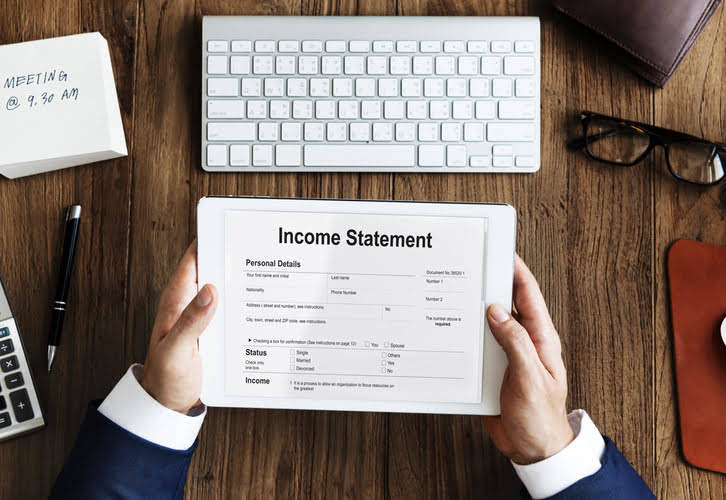Weighted average is best used in a manufacturing environment where inventory is frequently intermingled, and difficult to track separately. For example, on January 2, 2020, you purchase 100 crystals from your regular supplier at a cost of $4 each. On January 15, you need to purchase an additional 100 crystals, but your regular supplier raised the price to $6 each.
- Before getting into the differences between debit vs. credit accounting, it’s important to understand that they actually work together.
- To accurately enter your firm’s debits and credits, you need to understand business accounting journals.
- Inventory management involves tracking the flow of goods from procurement to delivery, ensuring that there’s always enough on hand when needed.
- Keeping track of inventory is essential for any company as it affects several aspects of their business operations.
He has been a manager and an auditor with Deloitte, a big 4 accountancy firm, and holds a degree from Loughborough University. This credit card is not just good – it’s https://www.kelleysbookkeeping.com/14-reasons-to-not-listen-to-suze-orman/ so exceptional that our experts use it personally. It features a lengthy 0% intro APR period, a cash back rate of up to 5%, and all somehow for no annual fee!
Rental Income and ExpensesRental Income and Expenses
For example, if an asset account which is expected to have a debit balance, shows a credit balance, then this is considered to be an abnormal balance. So for example there are contra expense accounts such as purchase returns, contra revenue accounts such as sales returns and contra asset accounts such as accumulated depreciation. If you’re looking for accounting software that can track inventory for your business, be sure to check out The Ascent’s accounting software reviews. With this order, the oldest crystals in stock, which were $6 each, were sold first, along with 65 crystals from the most recent purchase.
Since money is leaving your business, you would enter a credit into your cash account. You would also enter a debit into your equipment account how much does an employer pay in payroll taxes because you’re adding a new projector as an asset. Procurement plays a significant role in managing inventory levels efficiently.
The last entry in the table below shows a bookkeeping journal entry to record the inventory as it leaves work-in-process and moves to finished goods, ready for sale. Double-entry accounting is the process of recording transactions twice when they occur. A debit entry is made to one account, and a credit entry is made to another. Indicating the liquidity of the inventory, the figure represents how many days a company’s current stock of inventory will last. Generally, a lower DSI is preferred as it indicates a shorter duration to clear off the inventory, though the average DSI varies from one industry to another.
Double-Entry Accounting
Before getting into the differences between debit vs. credit accounting, it’s important to understand that they actually work together. To help you better understand these bookkeeping basics, we’ll cover in-depth explanations of debits and credits and help you learn how to use both. Keep reading through or use the jump-to links below to jump to a section of interest. Managing inventory levels requires careful planning and attention to detail.
Accounting for inventories can be complicated with specific rules for debits and credits affecting various accounts. Fortunately, computerized accounting systems help in this process, minimizing errors while automatically performing many tasks. The rules for inventory accounting in the United States are governed by the Generally Accepted Accounting Principles, also known as GAAP.
Increases could also be due to sales returns and in that situation, the journal entry involving inventory is to debit Inventory and credit Cost of Goods Sold. Often, a separate inventory account for returned goods is used — apart from the regular inventory. Can’t figure out whether to use a debit or credit for a particular account? The equation is comprised of assets (debits) which are offset by liabilities and equity (credits). You’ll know if you need to use a debit or credit because the equation must stay in balance.
Pros of using debit cards
The first type of inventory transaction you’d make would involve buying raw materials inventory, or the materials you use to make your products. You’ll have to have a basic understanding of the inventory cycle and double-entry accounting methods to make the proper entries. Merchandise inventory (also called Inventory) is a current asset with a normal debit balance meaning a debit will increase and a credit will decrease. The formula to calculate days in inventory is the number of days in the period divided by the inventory turnover ratio.
On the other hand, debiting your inventory can provide a more accurate picture of COGS by reducing its overall value as sales occur. In this way, debits essentially act like expenses against revenue and give a more realistic view of profitability over time. However, one potential downside of using credits is that they can make it more difficult to determine the true cost of goods sold (COGS). This is because each credit increases the value of your inventory without necessarily reflecting an actual increase in sales revenue.
Finding the method that best suits your business can go a long way toward making the process easier. If you only sold a single item, inventory accounting would be simple, but it’s likely that you have multiple items in inventory and need to account for each of those items separately. While this is not difficult, you can quickly run into complications when inventory costs vary.
We and our partners process data to provide:
Your business may be forced to either dispose of these assets or sell them at a loss. Therefore, to keep inventory from becoming a liability or loss, a business must not store too much at any time. However, at the same time, your company also does not want to have too little inventory, as shortages can cost sales. Using LIFO, because the $6 crystals were the last inventory items added before the customer’s purchase on January 20, they are the first ones sold. Inventory movement affects your company in multiple ways — impacting cash flow, cost of goods sold, and even profit — which is why accounting for it properly is so important. After you receive the raw materials, you will eventually use them to create your product.
Mary Girsch-Bock is the expert on accounting software and payroll software for The Ascent. The formula is used to create the financial statements, and the formula must stay in balance. You’ll notice that the function of debits and credits are the exact opposite of one another. In accounting, the terms credit and debit are used to describe the two sides of a transaction. Understanding the difference between these two concepts is crucial for managing your business’s finances effectively. As a firm’s average age of inventory increases, its exposure to obsolescence risk also grows.



